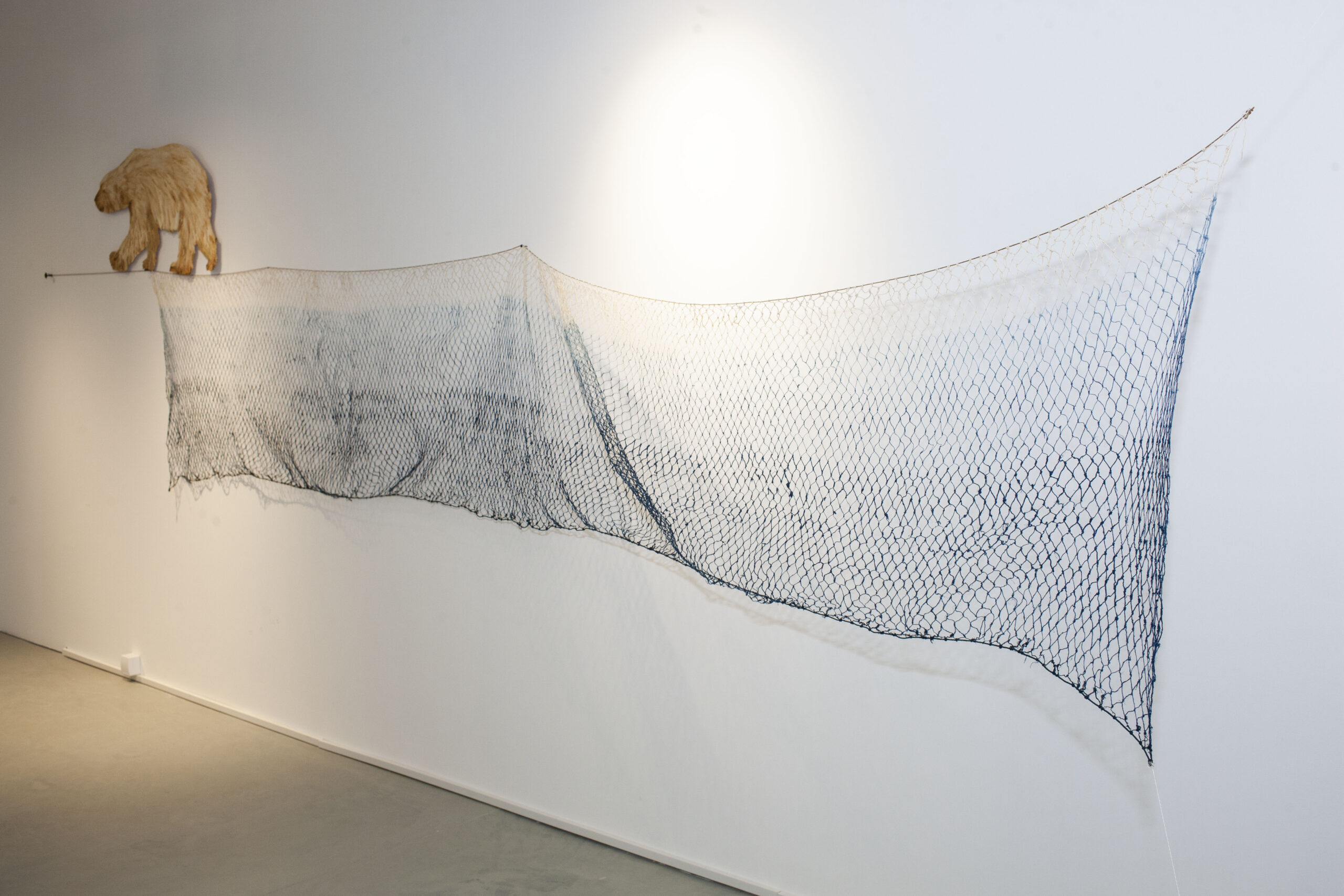Column
ColumnSHARING
The name of the exhibition Sharing calls for reflection on the role that each individual plays in designing and nurturing a common living space, both physical and emotional. The variety of materials, techniques and perspectives aims to inspire and encourage audience to engage their emotions and empathy and to see the variety of details overlapping and fitting into the bigger picture with more power and beauty. The term sharing here stands for the inevitability of mutual exchange in nature and society. Everything we let out multiplies and returns like a boomerang. Awareness of the transience of matter and the irrelevance of an individual in a crowd in which its authentic voice is lost seems depressing at first glance, while on the other hand it teaches us that some processes exceed the average human life and that every contribution, even the smallest one, counts. These two artists comment on topics related to intimacy, exploitation, understanding and meaning from their individual positions
Junko Suzuki’ s work in the broadest sense includes work in the weaving technique., she has been dedicated to researching this medium and examining the peculiarities of different materials and different techniques from her earliest student days . From the traditional Ikat and Hogushi-gasuri techniques , she has created her own complex, distinctive style, thanks to which her works are found in numerous private and public collections in Japan. In addition to textiles, she also uses paper in her work, i.e. a special technique of making paper fibers using colored newsprint, turning news into threads, giving them new content and meaning. She is not a supporter of strict media divisions and believes that there are no clear boundaries for certain phenomena in nature and in art showing that they can overlap and bring new solutions as well as new problems in the domain of what is possible and that it is the artist’s task to deal with it. Suzuki continues to experiment with materials, and in her work called Bears of Nametoko Mountain , she makes a figure of a bear out of corn silk and weaves it into a net woven from hemp fibers. The work Polar Bear is shaped from corn husks. For the bear, she chose the format of an indigo-dyed hemp hammock to evoke the image of the sea by making the bear walk across it. The form and material have an artistic and symbolic role in the work of Junko Suzuki. The bear is a powerful and strong animal that represents nature and becomes entangled and vulnerable, turning into an iconic reminder of the limits of man’s illusion of dominating nature. Hemp is used in production from industrial to medical. In many countries, the regulation of hemp cultivation depends on abuse in the drug market, that is, the law that regulates the use of hemp.

Terunuma Atsuro, in his pictures and video animations, creates an atmosphere of overcrowding, coming from the saturation of both visual and social sensations, rooted in our experience of living in modern civilization. His criticism, with a touch of satirical humor and anima aesthetics, is primarily addressed to the local environment of Japan. Images of cities where activity takes place day and night, where actors literally collide and overlap but essentially do not see and recognize each other, points to the alienation and loneliness that causes frustration. This fear of non-existence is expressed in a video called Yumokusei which could be translated as evaporation. In this and some other works by Atsura, an anima speaks on behalf of the artist, as an alter ego. Anima Mienai Nozomi appears and disappears in a multitude of events in the urban futuristic landscape.
… I don’t want to see. I don’t know the way I came from or the way I’m going back, because I don’t see any sign of common sense. I have to offer you extreme sleep, because the stimulation passes quickly…
The problem of exploitation of resources, from labor, economic, ecological and emotional levels ultimately leads to the confrontation with absurdity, a theme that has often been interpreted in different historical contexts. The absurdity of our age lies in the technological and intellectual possibilities we dispose of and the inability to resist the feeling of meaninglessness and vulnerability.
The artistic expression of Terunuma Atsura combines the informal style of underground drawings and illustrations, while in the technical sense it represents a very precise use of acrylic on canvas.
Main objective of the project is presenting the Japanese contemporary art scene to the local and international audience and building a cultural bridge between Serbia and Japan. We are focused on establishing strategic, long term exchange between Japanese and Serbian contemporary artists and developing cross cultural dialogue in the field of visual art. The cooperation would include a variety of forms such as exhibitions, artists talks, conferences, workshops, presentations, mobility of artists and cultural professionals.

Bel Art Gallery has developed the Danube Dialogues festival, an efficient platform for art presentation and cooperation in the Danube macro region, creating a unique dialogue between artists, curators, audience and local heritage. This platform could serve as a basis for wider cooperation within the ECoC network in the Danube region. We believe that through this kind of transnational cultural activities we can contribute to the mutual understanding and development of healthy society as a worldwide priority.








